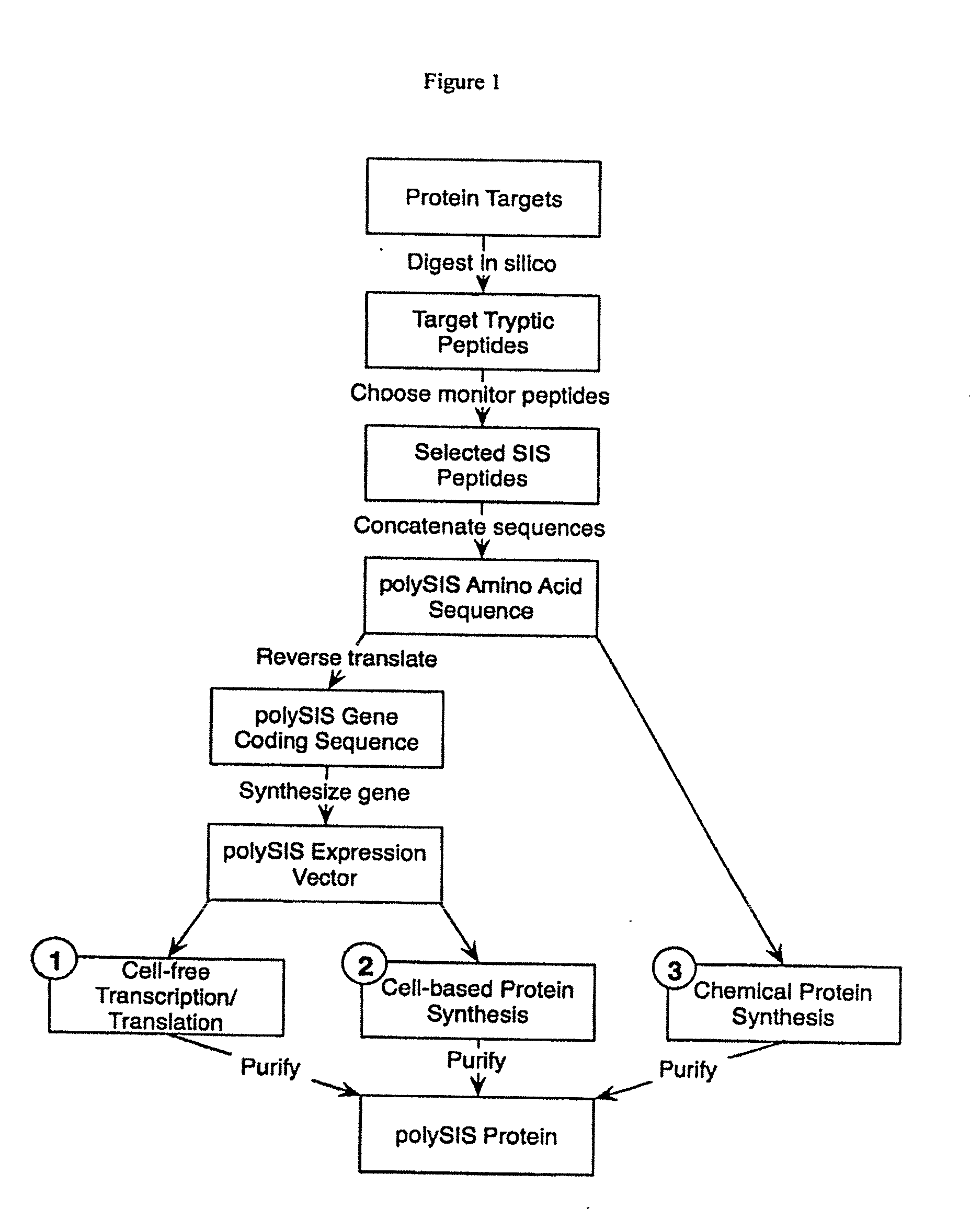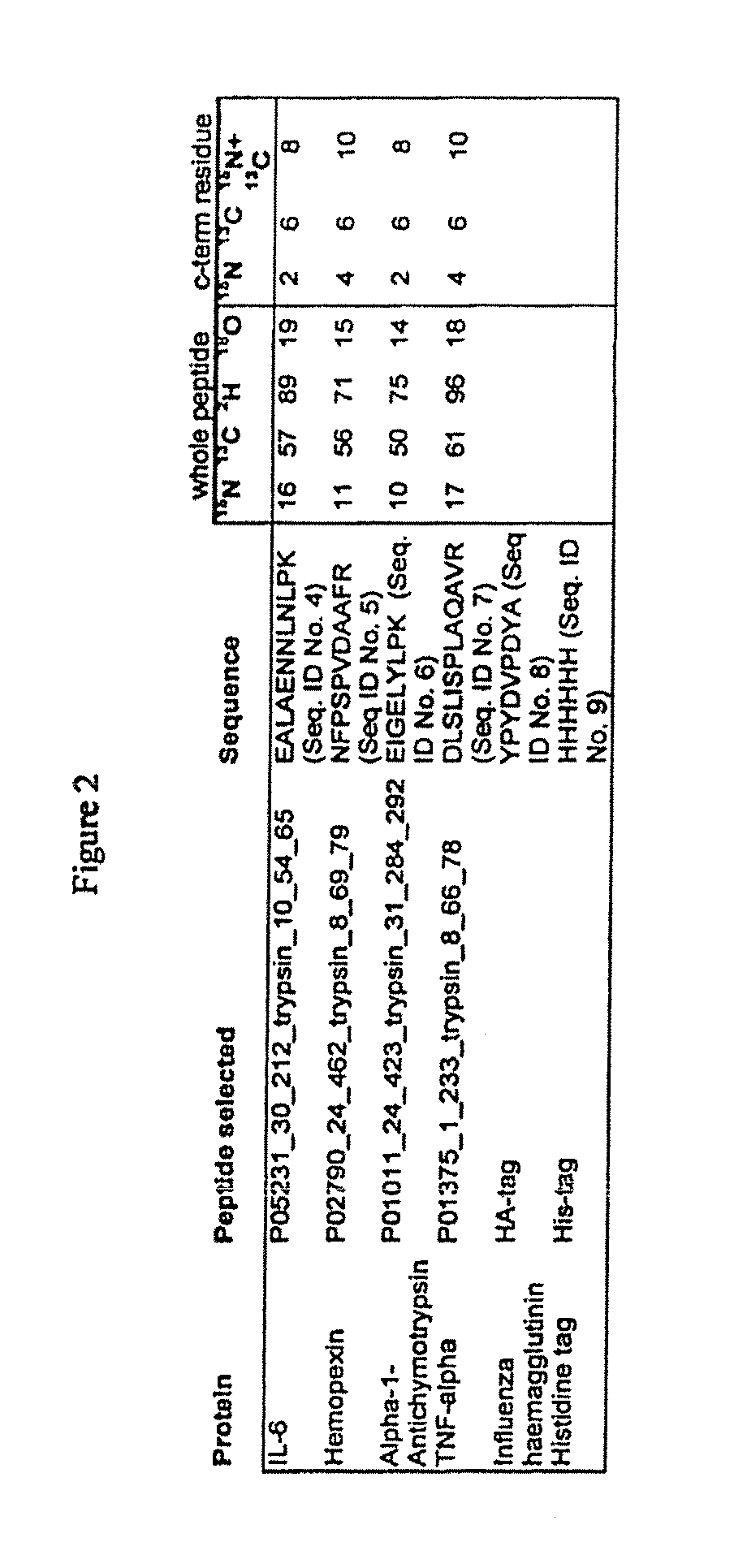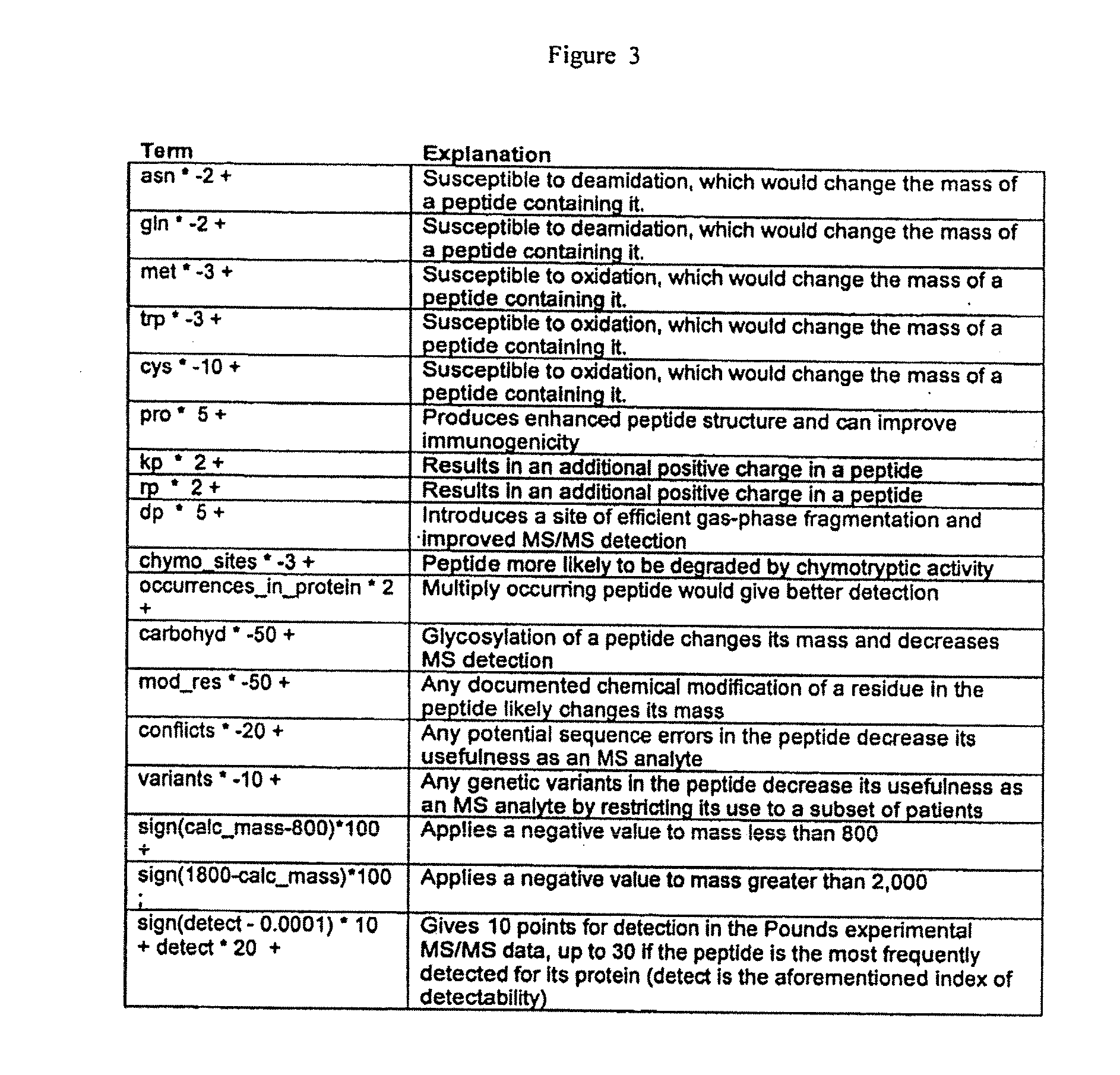Stable isotope labeled polypeptide standards for protein quantitation
a technology of stable isotopes and peptides, which is applied in the direction of peptides, peptide/protein ingredients, peptide sources, etc., can solve the problems of poor quantitative precision and reproducibility when used without internal standards, and the cost and ethical reasons are unlikely to be used directly in humans, so as to save the cost and effort of individual amino acid analysis and achieve high sensitivity quantitation of peptides
- Summary
- Abstract
- Description
- Claims
- Application Information
AI Technical Summary
Problems solved by technology
Method used
Image
Examples
embodiments
[0030]In each of the following embodiments, it is to be assumed that the preferred method of use can include other elements of the SISCAPA system described in US2003 / 031126.
[0031]1) In a first embodiment, a polySIS protein is prepared according to the steps shown in FIG. 1 (track 1). First a set of protein targets is selected whose amounts or concentrations are to be measured in one or more samples. These targets are “digested” in silico using an algorithm appropriate for the desired protease (e.g., for trypsin cut at K and R, except where followed by P) to yield a set of target tryptic peptides. From these candidate peptides, monitor peptides may be selected using information including the predicted physical properties of these peptides and available experimental data (e.g., which “fly” best in a mass spectrometer), selecting those optimal properties for detection, enrichment, etc. Multiple peptides can be selected from a single target protein in order to provide multiple independe...
example
[0048]A series of 177 proteins and protein forms that are demonstrated or potential plasma markers of some aspect of cardiovascular disease was assembled (Anderson, J Physiology 563.1:23-60, 2005). Protein sequence information for the candidate markers was obtained using Swissprot accession numbers in two stages. First, when the protein was already listed in the non-redundant list of human plasma proteins described previously (Anderson, Polanski, Pieper, Gatlin, Tirumalai, Conrads, Veenstra, Adkins, Pounds, Fagan and Lobley, Mol Cell Proteomics 2004), the relevant accession in that non-redundant set was used. If the protein was not in this list, it was located, where possible, by query of the Swissprot web database using protein names, and added to the non-redundant list. In some cases the name used in the literature was not sufficiently specific to allow selection of a single gene product, and the candidate was not taken forward. Sequence and Swissprot annotation data was obtained ...
PUM
| Property | Measurement | Unit |
|---|---|---|
| concentrations | aaaaa | aaaaa |
| diameter | aaaaa | aaaaa |
| concentration | aaaaa | aaaaa |
Abstract
Description
Claims
Application Information
 Login to View More
Login to View More - R&D
- Intellectual Property
- Life Sciences
- Materials
- Tech Scout
- Unparalleled Data Quality
- Higher Quality Content
- 60% Fewer Hallucinations
Browse by: Latest US Patents, China's latest patents, Technical Efficacy Thesaurus, Application Domain, Technology Topic, Popular Technical Reports.
© 2025 PatSnap. All rights reserved.Legal|Privacy policy|Modern Slavery Act Transparency Statement|Sitemap|About US| Contact US: help@patsnap.com



